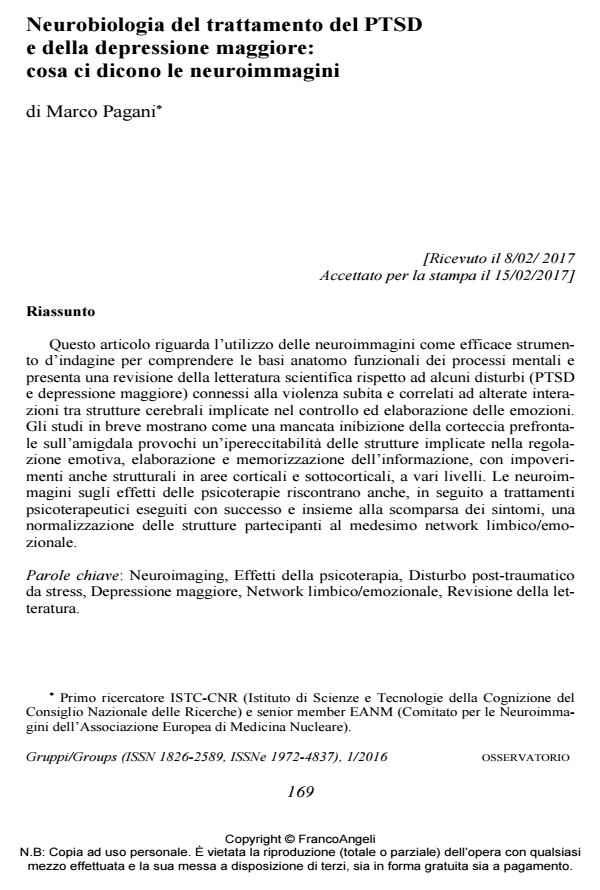Neurobiologia del trattamento del PTSD e della depressione maggiore: cosa ci dicono le neuroimmagini
Titolo Rivista GRUPPI
Autori/Curatori Marco Pagani
Anno di pubblicazione 2017 Fascicolo 2016/1
Lingua Italiano Numero pagine 9 P. 169-177 Dimensione file 158 KB
DOI 10.3280/GRU2016-001014
Il DOI è il codice a barre della proprietà intellettuale: per saperne di più
clicca qui
Qui sotto puoi vedere in anteprima la prima pagina di questo articolo.
Se questo articolo ti interessa, lo puoi acquistare (e scaricare in formato pdf) seguendo le facili indicazioni per acquistare il download credit. Acquista Download Credits per scaricare questo Articolo in formato PDF

FrancoAngeli è membro della Publishers International Linking Association, Inc (PILA)associazione indipendente e non profit per facilitare (attraverso i servizi tecnologici implementati da CrossRef.org) l’accesso degli studiosi ai contenuti digitali nelle pubblicazioni professionali e scientifiche
Questo articolo riguarda l’utilizzo delle neuroimmagini come efficace strumento d’indagine per comprendere le basi anatomo funzionali dei processi mentali e presenta una revisione della letteratura scientifica rispetto ad alcuni disturbi (PTSD e depressione maggiore) connessi alla violenza subita e correlati ad alterate interazioni tra strutture cerebrali implicate nel controllo ed elaborazione delle emozioni. Gli studi in breve mostrano come una mancata inibizione della corteccia prefrontale sull’amigdala provochi un’ipereccitabilità delle strutture implicate nella regolazione emotiva, elaborazione e memorizzazione dell’informazione, con impoverimenti anche strutturali in aree corticali e sottocorticali, a vari livelli. Le neuroimmagini sugli effetti delle psicoterapie riscontrano anche, in seguito a trattamenti psicoterapeutici eseguiti con successo e insieme alla scomparsa dei sintomi, una normalizzazione delle strutture partecipanti al medesimo network limbico/emozionale.
Parole chiave:Neuroimaging, Effetti della psicoterapia, Disturbo post-traumatico da stress, Depressione maggiore, Network limbico/emozionale, Revisione della letteratura.
Marco Pagani, Neurobiologia del trattamento del PTSD e della depressione maggiore: cosa ci dicono le neuroimmagini in "GRUPPI" 1/2016, pp 169-177, DOI: 10.3280/GRU2016-001014